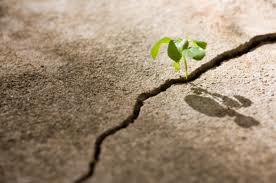 We don’t have to look far in our world to see rapid change. People who lead and influence may find themselves in a whirlwind cycle of reactivity, feeling as if the world is happening around them, and often is not the world they wish it could be. Leaders who are effective demonstrate resilience and the capacity to skillfully handle a changing environment.
We don’t have to look far in our world to see rapid change. People who lead and influence may find themselves in a whirlwind cycle of reactivity, feeling as if the world is happening around them, and often is not the world they wish it could be. Leaders who are effective demonstrate resilience and the capacity to skillfully handle a changing environment.
According to thedictionary, resilience means:
- The power or ability to return to the original form, position, etc., after being bent, compressed, or stretched; elasticity.
- Ability to recover readily from illness, depression, adversity, or the like; buoyancy.
The American Psychological Association cites these attributes regarding resilience: report
- The capacity to make and carry out realistic plan
- Communication and problem-solving skill
- A positive or optimistic view of life
- Confidence in personal strengths and abilities
- The capacity to manage strong feelings, emotions, and impulses
 The encouraging news is that resilience can be learned and developed!
The encouraging news is that resilience can be learned and developed!
Research (Aguirre, 2007; American Psychological Association, 2006; Bonanno, 2004) has shown that resilience is ordinary, not extraordinary, and that people regularly demonstrate being resilient.
-
Resilience is not a trait that people either have or do not have.
-
Resilience involves behaviors, thoughts, and actions that can be learned and developed in anyone.
-
Resilience is tremendously influenced by a person’s environment.
Developing resilience is a journey unique to each one of us. However, there are ways to strengthen our resilience muscle. The Heart Math Institute has developed several accessible techniques that assist. One of the best ways is through being present to what is. It may feel counter-intuitive, at first but try it.
How to strengthen our resilience muscle:
-
 Take several slow, deep inhalations and exhalations of the same length. It is important to breathe in through your belly via your nose, and exhale through your mouth. Visualize your heart and the area around your heart.
Take several slow, deep inhalations and exhalations of the same length. It is important to breathe in through your belly via your nose, and exhale through your mouth. Visualize your heart and the area around your heart. -
Feel the feeling associated with the event or circumstance is a way of acknowledging “what is.”
-
After feeling the feeling of “what is,” activate a deep sense of gratitude. Look at it with curiosity and without judgment.
-
Then choose a feeling that is heartfelt; one that allows you to feel connection, compassion, understanding, joy, peace, etc.
-
Quietly experience any sensations or intuition you may receive.
Many people find this is a very instructive window towards developing greater resilience in challenging situations. Give it a try and let me know how it works for you by commenting below. We will be offering other ways to develop resilience in future blog posts. In the meantime…

